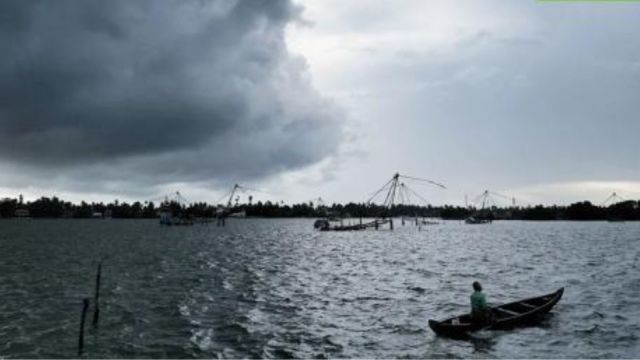Pacific Ocean free from El Nino conditions, says NOAA
La Nina conditions, which enhance rainfall over India, likely to emerge from July.
 US-based National Ocean and Atmospheric Administration announced that the El Nino conditions prevailing since mid-2023 had ended last month (File Image)
US-based National Ocean and Atmospheric Administration announced that the El Nino conditions prevailing since mid-2023 had ended last month (File Image)The US-based National Ocean and Atmospheric Administration (NOAA) Thursday announced that the El Nino conditions prevailing since mid-2023 had ended last month and have been replaced by El Nino Southern Oscillation (ENSO) neutral conditions.
The latest El Nino episode, which had commenced in June 2023 lasted for 11 months. It was one of the strongest El Nino events ever experienced.
ENSO is a naturally occurring ocean-atmospheric phenomenon and its three phases resurfacing once every 2 – 7 years. Its phases — positive, neutral or negative — are decided by the sea surface temperatures, wind intensities and direction measured along the equatorial Pacific Ocean. While El Nino refers to the warmer than usual sea surface conditions whereas La Nina is the cooler conditions over this region. Both El Nino and La Nina are known to cause extreme weather like floods, droughts, heat and cold waves, and increase cyclonic activities across the globe.
According to a NOAA statement, near neutral sea surface temperatures were recorded over the equatorial Pacific Ocean in May.
“ENSO neutral conditions returned during the past month. The recent weekly Nino 3.4 Index was +0.1 degree Celsius,” the NOAA said.
El Nino negatively impacts the Indian monsoon whereas La Nina aids the monsoon over India.
This year’s severe heatwave conditions over India got aggravated due to El Nino, weather experts in India had said. This summer, several parts of southern, eastern, northwestern and northern India regions suffered heatwave spells lasting as long as 18 days (Odisha, Gangetic West Bengal, west Rajasthan, Delhi, Uttar Pradesh). The maximum temperatures ranged between 45 – 51 degree Celsius and such extreme temperatures persisted for several days as heatwaves swept through these regions during April till date. Due to such exceptionally hot conditions, there has been a spike in the heat-related deaths, demand for water and power shooting through the roof over many parts of the country.
NOAA, further, said that starting next month, there are chances for the emergence of La Nina conditions. “La Nina may develop during July-September and persist through the winter over the northern hemisphere during November – January.”
With reference to the development of La Nina conditions aided by other oceanic factors post August, the India Meteorological Department (IMD) has predicted above normal rainfall during the later half of the ongoing southwest monsoon season over India. Usually, July and August are the rainiest months over the country during its chief, four-month-long southwest monsoon season. During these two months, nearly 70 per cent of the seasonal rainfall is received.







